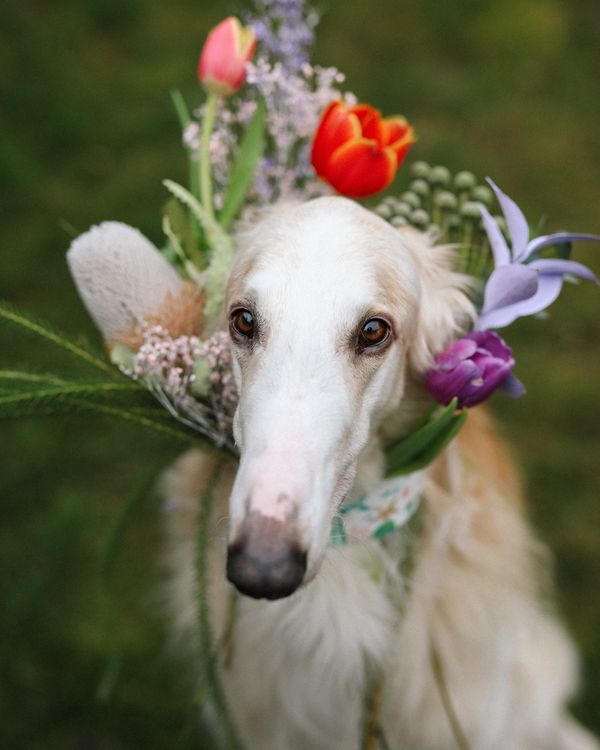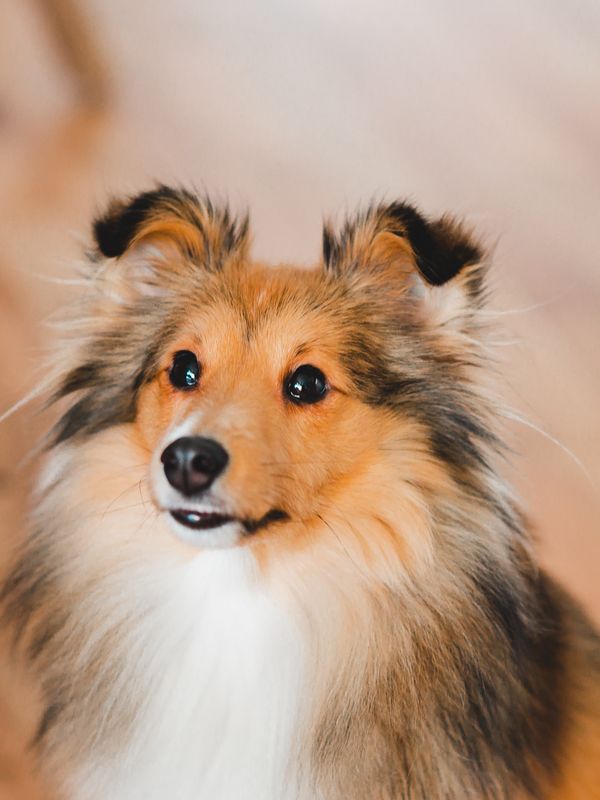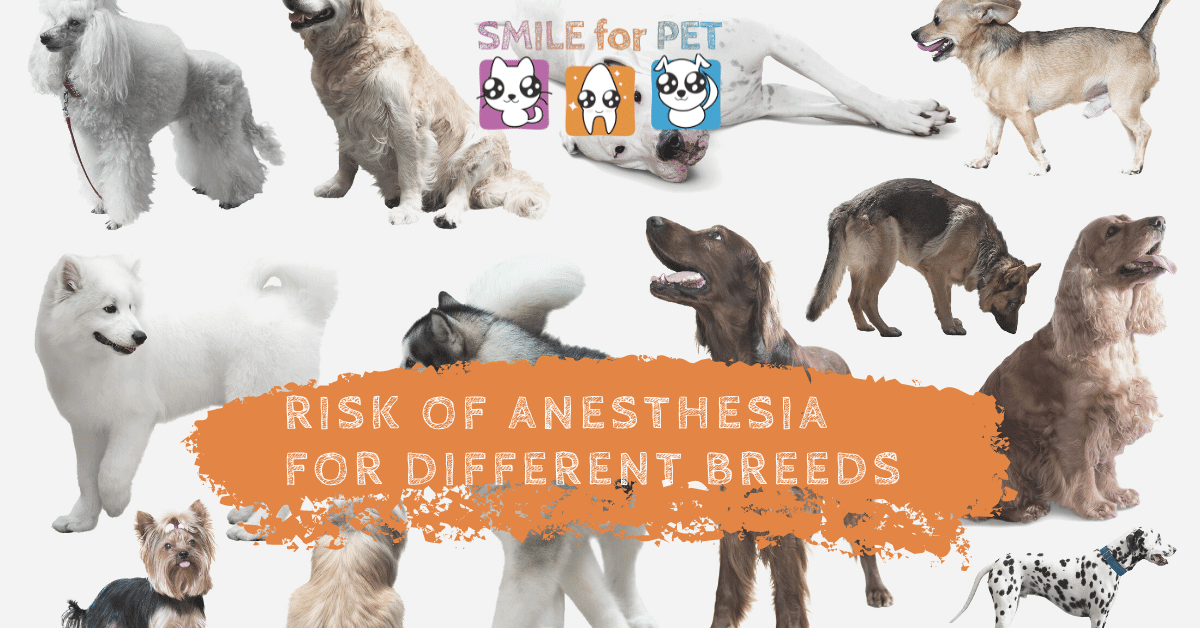For some breeds risk of anesthesia is less than for others. Smile4pet article will explain what kind of dogs & cats do better or worse and why.
- Introduction
- Store at-a-glance
- Good to know
- Brachycephalic Breeds
- Sighthounds
- Herding breeds
- Giant breeds
- Toy Breeds
- Giant Breeds
- Doberman Pinscher
- Boxers Breeds
- Conclution
Story at-a-glance
- Genetic differences among breeds and anatomical variations can increase the risk of anesthesia for certain dogs and even cats.
- Brachycephalic pets – those with “pushed in” faces – are at high risk for airway obstruction, which makes anesthetization a special challenge. (These short-snouted breeds include Pugs, Boston Terriers, Pekingese, Boxers, Bulldogs, and Shih Tzus)
- Other breeds tend to be hypersensitive to sedating drugs, which makes the risk of over-sedation higher than usual.
- If you have a pet at higher than normal risk for anesthesia complications – including a brachy, a sighthound, one of the herding breeds, a tiny dog, a giant breed, a Doberman Pinscher or a boxer bred in the UK – you’ll want to inform yourself about your pet’s special needs.
- Sedation and anesthesia can be done safely and successfully with any breed of dog or cat, providing all necessary pre-work is accomplished and the patient is carefully monitored from premedication through extubation.
Good to know
Most pet owners know that putting a dog or cat under anesthesia gets riskier the older the animal is.
But many people aren’t aware that genetic differences among breeds and even a dog’s anatomy can also increase the risk of anesthesia.
For example, brachycephalic breeds’ “smashed in” faces put those pets at higher risk for airway obstruction than breeds with longer muzzles.
Then there are breeds predisposed to increased responsiveness to anesthesia. This means it takes less of the drug to produce the desired effect, which increases the risk of overdose. Some breeds take much longer to recover than other animals.
Another high-risk group for anesthesia is pets with heart disease. If heart problems, either acquired or congenital, are known or suspected to exist, ask a veterinary cardiologist to consult you before going through an anesthesia-based procedure.
The following information aims to make pet owners and caretakers of these breeds aware of the potential for anesthesia-related risks. Your veterinarian and their staff should also be mindful of breed-related sensitivities and take all necessary precautions before, during, and after anesthesia. But as an informed pet owner, you can provide a double layer of protection in the care of your beloved four-legged companion.
Risk of anesthesia for Brachycephalic Breeds

Most brachys (bulldogs, pugs, boxers, Boston terriers, and cats with “pushed in” faces) have some degree of brachycephalic airway syndrome. The stress placed on the airways from anesthesia can result in additional airway contraction, which can cause obstruction.
Veterinarian technicians must closely monitor the Brachycephalic pets from the point of premedication through the final step of extubation (removal of the breathing tube).
Extubation shouldn’t be attempted until the pet is awake, alert, and swallowing. Removing the tube while the animal is still groggy from anesthesia increases the risk of upper airway obstruction.
Unfortunately, many brachycephalics are overweight or obese and must be ventilated while anesthetized. One way to reduce your brachy’s anesthesia risk (and increase his overall quality of life) is to keep your pet at a healthy weight.
Sighthounds

Sighthounds are so named because they hunt using sight and speed, whereas scent hounds hunt by scent and endurance. The greyhound, whippet, Italian greyhound, Afghan hound, Borzoi, Irish wolfhound, and the Saluki are sighthounds.
This breed type, especially greyhounds, are genetically inclined to metabolize drugs differently than other breeds. These dogs need a careful physical exam and comprehensive blood work before any procedure requiring anesthesia. They should also be tested for cardiac abnormalities like dilated cardiomyopathy.
Other considerations for sighthounds undergoing anesthesia:
- They tend to experience “white-coat effect” (hospitalization-related stress)
- They metabolize drugs more slowly than other dogs, and sometimes recover more slowly as well
- They are at higher than normal risk for hyperthermia while anesthetized because they have only about half the body fat of other dogs.
Risk of anesthesia for Herding Breeds

Herding dogs like the collie, border collie, Australian shepherd, and the sheltie often have a genetic mutation in the ABCB1 (formerly MDR1) gene that allows certain drugs to accumulate in the brain – including some anesthesia agents. These breeds can be over-sedated without proper dosing and monitoring and experience respiratory depression.
Toy Breeds
More negligible (smaller) the animal, the higher the risk when administering any drug, including anesthesia.
Toy dogs must be carefully weighed and given the appropriate dose of anesthetic based on their small size. Monitoring during the procedure is crucial (as it is for all patients, particularly the tiny ones), including accurate blood pressure measurement.
Small dogs tend to have low body temps and hypoglycemia (low blood sugar), so it’s also essential to keep them warm during anesthetization and monitor their blood glucose levels.
Giant Breeds
You might think Newfoundlands or Great Pyrenees, for example, are so massive that they need higher doses of anesthesia drugs to put them “under.” But the fact is, giant dogs often respond profoundly. In other words, they over-respond to the average therapeutic doses of sedatives.
These dogs should be dosed according to lean body mass or surface area rather than actual body weight.
Risk of anesthesia forDoberman Pinscher
Dobies have a genetic variation that can cause von Willebrand disease, a problem with blood clotting. They also have a predisposition to develop dilated cardiomyopathy.
Dobermans should be evaluated for both conditions before any surgery. If von Willebrand is suspected, a drug can be given before surgery. Also, NSAIDs (non-steroidal anti-inflammatory drugs) in Dobies with von Willebrand disease are controversial, so other types of painkilling agents should be considered.
Boxers Bred in the U.K. (English Boxers Breeds)
Rarely, do certain dogs within a breed respond differently to anesthesia than other dogs of the same species. An example: boxers from the U.K. are known to suffer heart arrhythmias, low blood pressure, and collapse when given a standard dose (for U.S. boxers) of the sedative acepromazine.
Conclution:
Although many dogs and cats breeds have breed-related variations, the most important is that your vet and their staff customize an anesthesia protocol for your pet. Anesthesia can be safe for any breed of dog or cat only if:
- proper pre-operative workup is accomplished
- the pet is appropriately monitored
- the procidure begun with premedication
- ended with well-timed extubating

